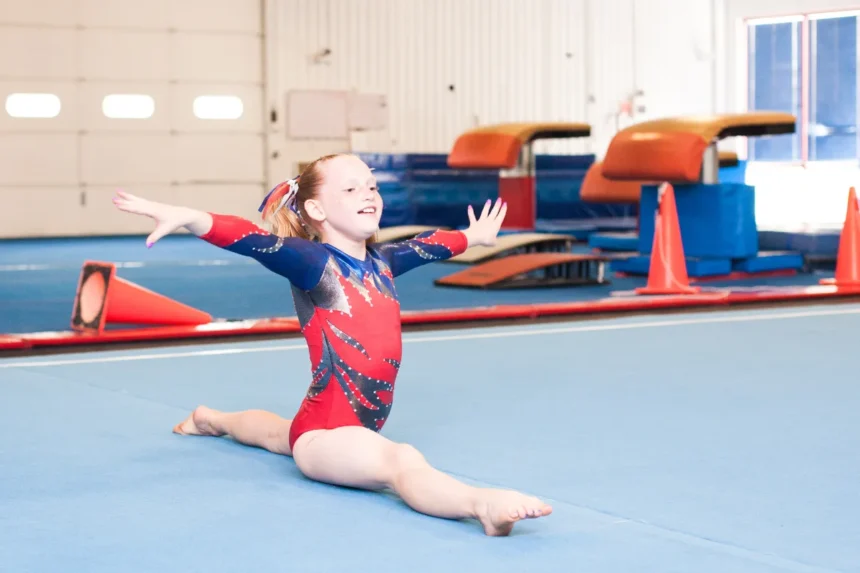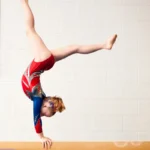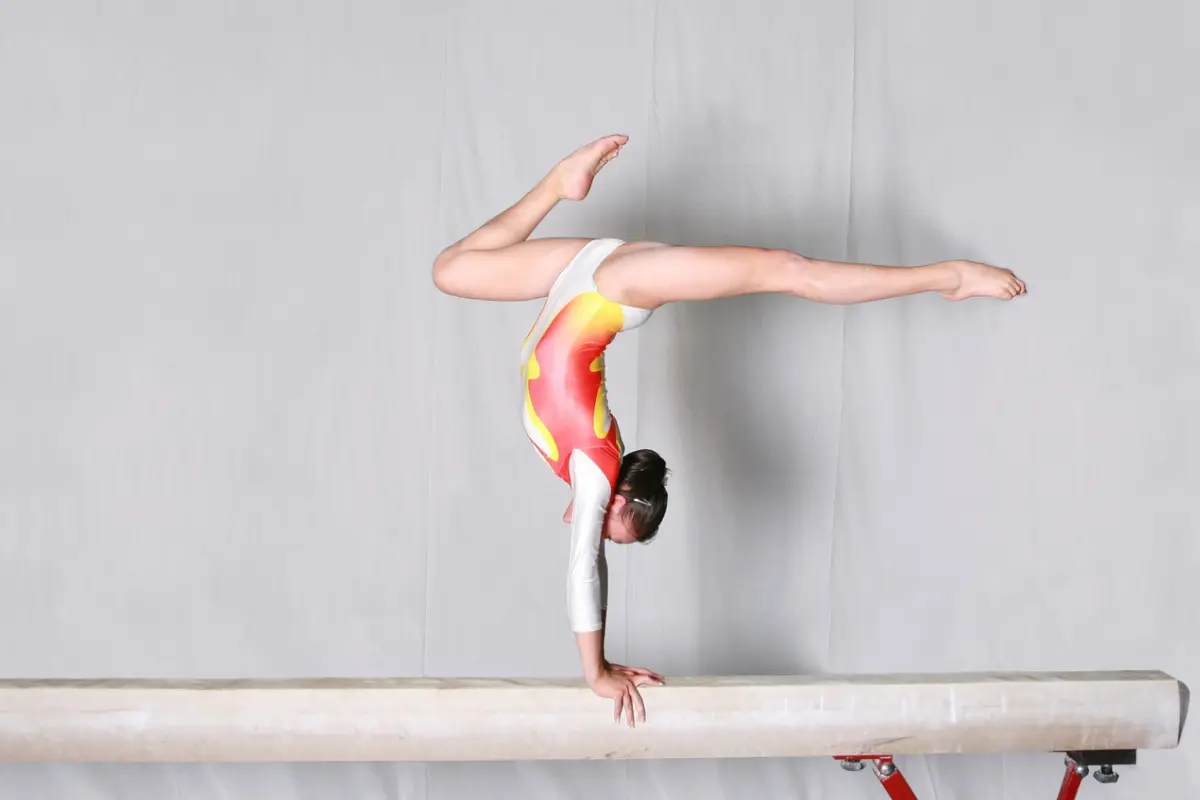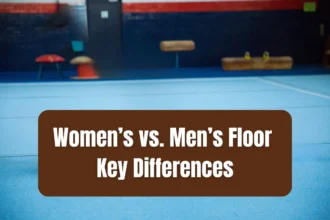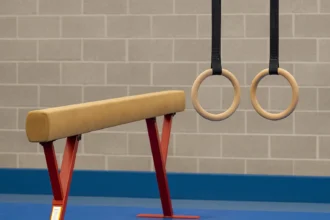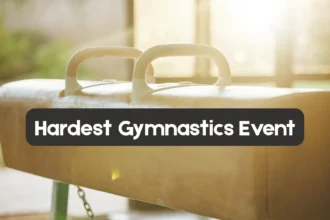In gymnastics, floor routines are more than just flips and dance—they’re timed performances, tightly choreographed within specific rules. Whether you’re watching an Olympic floor routine or your child’s first meet, the clock is always running, and going even a second over can cost valuable points.
Let’s break down the updated 2025 time rules for:
- Women’s Artistic Gymnastics (WAG)
- Men’s Artistic Gymnastics (MAG)
- USA Gymnastics Development Program (DP)
- Xcel Program
- Rhythmic Gymnastics (optional but fascinating!)
Women’s Artistic Gymnastics (WAG)
International Elite Level (FIG Rules)
- Time Limit: Max 90 seconds
- Music: Required (no lyrics)
- Overtime Deduction: 0.10
- Timing Starts: With the gymnast’s first movement
Elite women’s floor routines—seen at the Olympics, World Championships, and other FIG-sanctioned events—must stay within 1 minute and 30 seconds. Routines blend tumbling, leaps, dance turns, and expressive choreography, all synchronized to music.
Source: FIG WAG Code of Points 2025–2028
USA Gymnastics Development Program (WAG)
Levels 1–5 (Compulsory)
- Preset music and choreography
- Level 1: ~30 seconds
- Level 2: ~45 seconds
- Level 3: ~60 seconds
- Level 4: ~70 seconds
- Level 5: ~80 seconds
At these levels, gymnasts perform to standardized routines with official music, so timing is pre-built into the performance—no editing or custom choreography required.
Levels 6–10 (Optional)
- Level 6: Max 1:15
- Levels 7–10: Max 1:30
- Deduction: 0.10 for going overtime
Optional routines give gymnasts creative control over music, choreography, and skills, but that freedom comes with a timer. Choreographing to land your final pose at 1:28 (not 1:31!) becomes a key part of training.
Source: USA Gymnastics Women’s DP Code of Points
USA Gymnastics Development Program (WAG)
Levels 1–5 (Compulsory)
- Routine Lengths: Determined by preset compulsory music
- Level 1: ~30 seconds
- Level 2: ~45 seconds
- Level 3: ~60 seconds
- Level 4: ~70 seconds
- Level 5: ~80 seconds
These routines are pre-choreographed, so gymnasts follow along with official USAG music—no need to manage timing manually.
Levels 6–10 (Optional)
- Level 6: Max 1:15
- Levels 7–10: Max 1:30
- Overtime Deduction: 0.10 points
Optional routines allow gymnasts to choose their own music and choreography, but they still must follow the clock. Routines that run over time risk deductions.
Source: USA Gymnastics Women’s DP Code of Points
USA Gymnastics Development Program (WAG)
Levels 1–5 (Compulsory)
- Preset music and choreography
- Level 1: ~30 seconds
- Level 2: ~45 seconds
- Level 3: ~60 seconds
- Level 4: ~70 seconds
- Level 5: ~80 seconds
At these levels, gymnasts perform to standardized routines with official music, so timing is pre-built into the performance—no editing or custom choreography required.
Levels 6–10 (Optional)
- Level 6: Max 1:15
- Levels 7–10: Max 1:30
- Deduction: 0.10 for going overtime
Optional routines give gymnasts creative control over music, choreography, and skills, but that freedom comes with a timer. Choreographing to land your final pose at 1:28 (not 1:31!) becomes a key part of training.
Source: USA Gymnastics Women’s DP Code of Points
Xcel Program (WAG)
The Xcel program offers a more flexible and inclusive path, especially for athletes training fewer hours or entering the sport later.
| Division | Max Routine Time |
|---|---|
| Bronze | 45 seconds |
| Silver & Gold | 60 seconds |
| Platinum & Diamond | 90 seconds |
The timing is scaled by division to match age, ability, and skill complexity, giving gymnasts room to grow without being overwhelmed by elite-level expectations.
Source: USA Gymnastics Xcel Code of Points
Men’s Artistic Gymnastics (MAG)
International Elite Level (FIG Rules)
- Time Range: 60–70 seconds
- Music: Not allowed
- Overtime Deduction: 0.10
- Timing Starts: With first movement
Men’s floor routines skip the music and the dance. Instead, they focus on tumbling passes, balance skills, and strength holds. But the pressure is still on—routines must be at least 60 seconds and no longer than 70 seconds, or deductions kick in.
Source: FIG MAG Code of Points 2025–2028
USA Gymnastics Development Program (MAG)
| Level | Max Time |
|---|---|
| Levels 4–7 | 50 sec |
| Levels 8–10 | 70 sec |
Just like the women’s program, the MAG time limits increase with skill level. At lower levels, shorter routines help younger gymnasts stay focused and build endurance progressively.
Source: USA Gymnastics MAG DP Manual
Rhythmic Gymnastics: A Very Different Clock
Rhythmic gymnastics has floor routines too—but they follow entirely different rules and are performed on a carpeted surface with apparatus like ribbons, balls, hoops, and clubs.
Routine Time Limits:
- Individual (Junior & Senior): 1:15 – 1:30
- Groups of Five: 2:15 – 2:30
Every second outside this range costs 0.05, so music editors often trim tracks to 1:28 or 2:28 to leave a safety buffer. Timing is everything—especially when five gymnasts are executing synchronized tosses, exchanges, and formations nonstop.
The longer group window allows athletes to pull off complex patterns without rushing. In rhythmic, the clock doesn’t just measure performance—it drives it.
Quick Reference Table: Floor Routine Time Limits (2025)
| Program / Level | Time Limit | Music | Overtime Deduction |
|---|---|---|---|
| WAG – FIG Elite | Max 1:30 | Yes | 0.10 |
| MAG – FIG Elite | 1:00–1:10 | No | 0.10 |
| WAG – DP Level 6 | Max 1:15 | Yes | 0.10 |
| WAG – DP Levels 7–10 | Max 1:30 | Yes | 0.10 |
| WAG – DP Levels 1–5 | ~30–80 sec | Yes | N/A (preset music) |
| MAG – DP Levels 4–7 | Max 0:50 | No | 0.10 (if stated) |
| MAG – DP Levels 8–10 | Max 1:10 | No | 0.10 |
| WAG – Xcel Bronze | Max 0:45 | Yes | 0.10 |
| WAG – Xcel Silver & Gold | Max 1:00 | Yes | 0.10 |
| WAG – Xcel Platinum & Diamond | Max 1:30 | Yes | 0.10 |
| Rhythmic – Individual | 1:15–1:30 | Yes | 0.05/sec outside range |
| Rhythmic – Group | 2:15–2:30 | Yes | 0.05/sec outside range |
Final Thoughts: Time Is a Gymnast’s Silent Judge
In gymnastics, the difference between a perfect score and a costly deduction can be measured in seconds. Whether you’re flipping across a spring floor or gracefully tossing a ribbon across the carpet, time isn’t just a limit—it’s part of the performance. Behind every tumble, turn, or pose is a countdown—and a gymnast making the most of every moment.


